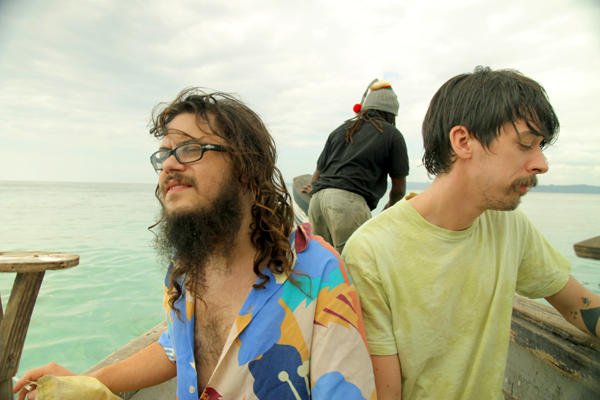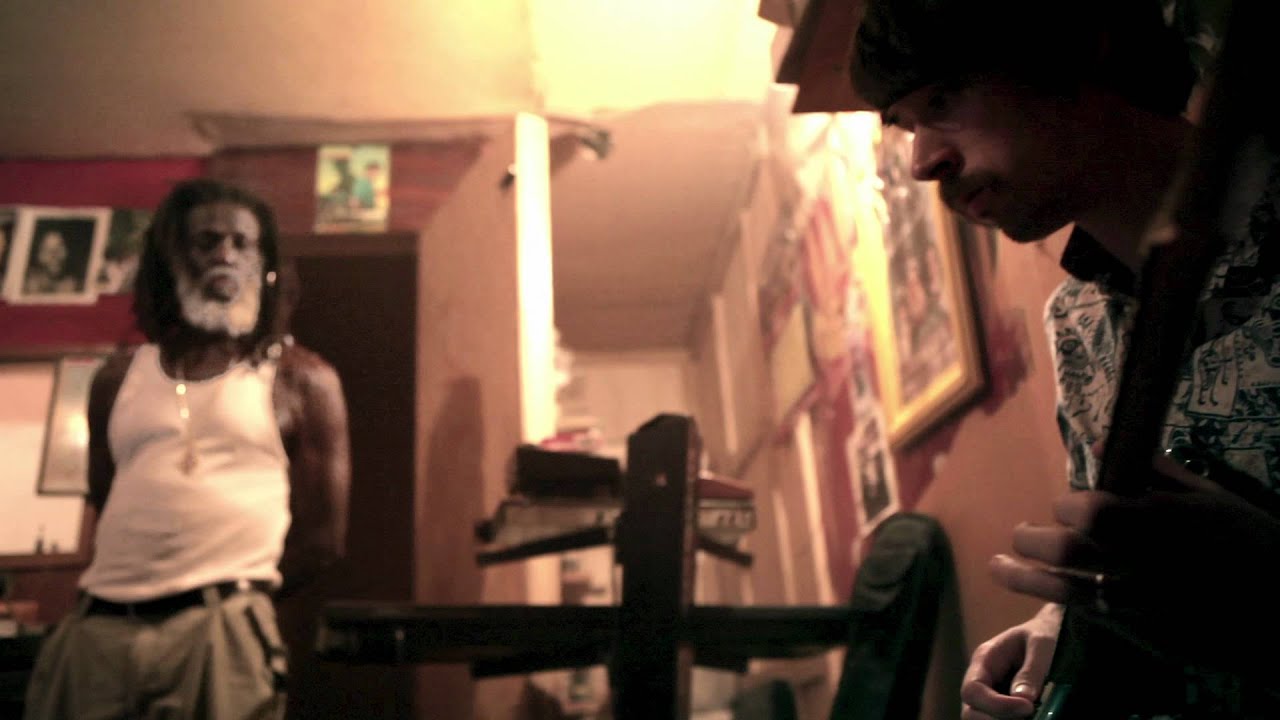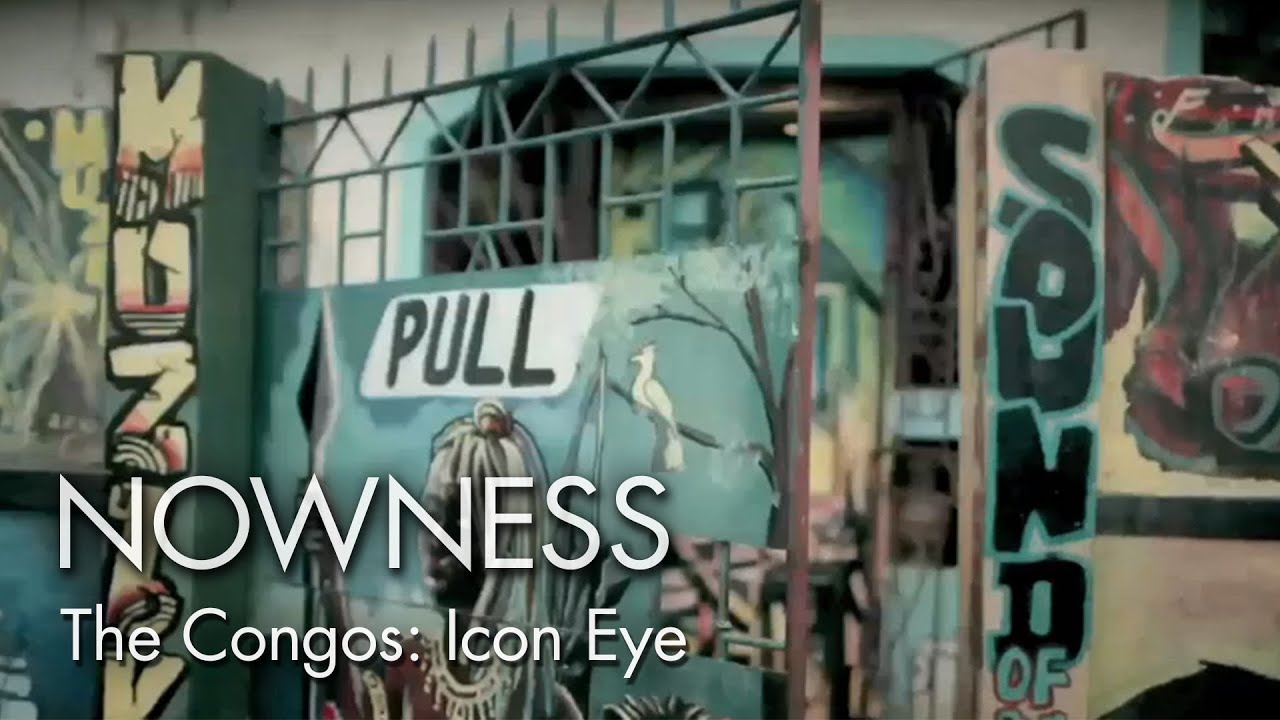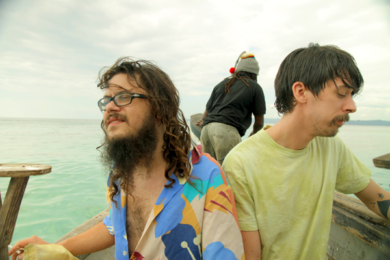Earlier this month, The Quietus published editor John Doran’s lengthy interview with The Congos, one of the most legendary of all of Jamaica’s vocal reggae groups. Much of that piece rightly revolved around the group’s 1977 album Heart Of The Congos, a Lee ‘Scratch’ Perry production that remains a thing of mournful, soulful beauty.
What brings The Congos to London in 2012, however, is not the legacy of any past glory, but a relatively new musical endeavour – an album recorded with two Los Angeles-based experimental musicians, Cameron ‘Sun Araw’ Stallones and M Geddes Gengras, entitled Icon Give Thank. Conceived as part of New York label RVNG’s series of “future now” collaborations released on splinter label FRKWYS, this LP set is the product of nine days of intense joint work in The Congos’ island compound, HQ – a meeting of minds captured by filmmakers Tony Lowe and Sam Fleischner and released as a supplementary DVD, Icon Eye.
The idea that dub reggae might be a genre improved by the creative input of white American dudes might get a genre purist’s hackles up, but Icon Give Thank is nonetheless something special. In the film, we see Stallones and Gengras acclimatise to life in and around “the lion’s den”, drinking gloopy fruit-and-nut smoothies, smoking thick-rolled joints, kicking back in the yard – and the slowness of the pace engenders a sort of hallucinogenic quality. It finds its way into the music, too. The likes of ‘Happy Song’ and ‘Thanks And Praise’ are not dub music, exactly, but their loping rhythms, their glint and glimmer, feels like an honest representation of island life. And the Congos throw themselves into it with gusto, their sweet harmonies turning the pair’s soundscapes into expressions of joy and prayers of forgiveness.
On the brink of the project’s debut live realisation this Friday at the Village Underground in London, we present this conversation with Stallones and Gengras about the making of Icon Give Thank.
When was the idea for the collaboration with The Congos first mooted? Had you been in touch with them already, or did it all come about because of the FRKWYS project?
Sun Araw: Contact only came about through FRKWYS. They were on a list of possible collaborators that Matt [RVNG, FRKWYS curator] asked me to make, but he really honed in on them and made the connection.
Why the Congos? What of their music made the idea of collaboration attractive? Did you go with much trepidation? Were you worried that it just… might not work?
M Geddes Gengras: I was introduced to Heart Of The Congos in my first year of college by my dear friend Rafi, and it has been a true totemic object since then. The highest vibrations imaginable pour from Ashanti and Cedric’s voices and the production, done at the literal peak of Scratch’s work, fuse roots and dub techniques in a way both seamless and alien – not of this world. One of the few perfect records ever made, in my opinion. Of course I was scared and stressed about doing a project of this scope in such a short time with artists that I consider legends, but I maintained faith that the love of the music would guide us, and it did.
SA: Even after we were knee-deep on the island, there were a huge amount of questions and no answers. That turned out to be a blessing, because intuition and open-hearted investigation were the only options. No schemes could stand up to that energy.
What did The Congos make of your music – had they heard any before your meeting?
SA: I’m not entirely sure to be truthful. Matt sent them some of my music, and I know they heard enough of it to think that a collaboration would be a good idea.
How long did you spend in Jamaica? What was their headquarters like?
MGG: We were there for nine days in total.
SA: HQ is a pretty incredible. It’s a gathering place for the Congos and their family, always with a lot of movement and exchange happening in and around the courtyard. It’s in a fairly wild part of Portmore, but the whole structure is marked and sanctified by these kaleidoscopic murals that cover every inch of the structure, painted by Barrington Clarke – Selassie crowned with the orbit of Saturn, a Last Supper with a Selassie-Christ, a Marcus Garvey-Peter and a Bob Marley-John, jungle scenes, portraits of the Congos. The setting is exuberant.
MGG: Life in the lion’s den involves generations of family, a constant stream of visitors, spending the rare bits of free time out in the courtyard sitting on an old railroad tie propped up on cinderblocks, and raving in a way that results from existing in such an overtly spiritual place. Every colour is so vivid, the fruit tastes better than you ever knew it could – and it was grown next door. It was a dream for us. For them, it is life.
In terms of the music-making, was this like anything you had engaged in before?
MGG: The setting was foreign, but the recording set-up was similar to what I work with at home. Though Cameron and I have never made a record together in such a way, we have played together in bands and watched each other’s evolutions as artists over the past few years. Producing music for singers was not something I had really done before, but everything moved smoothly and naturally and the record let us discover what it was.
Was there a ‘leader’, or was it strictly collaborative? Did it come together in a very different way to your typical recording?
SA: Me and Ged worked in total equal collaboration on the rhythms. The way the whole project went was that Ged and I made all the music, hustling rough mixes on to CDs for the Congos to meditate on and write vocals/lyrics. It’s funny – there was no intention or boundaries set for who would do what between Ged and I, and the tracks emerged as a freakily exact midpoint between us. We made it all in a frenzy with no thought but finishing the rhythms, but later while we were mixing we picked apart who played what and discovered that it has this perfect balance on every track, placing it pretty far away from something either of us would create alone.
MGG: We quickly fell into a deep rhythm with each other and the work was easy after that.
Did you find yourself using unfamiliar equipment? How were the tracks composed? I gather you made the music, the Congos wrote lyrics and sang, but in the film there’s shots of the Congos playing percussion, so I guess the lines in places were blurred?
MGG: We used what little we brought and what was there – some great drums, a borrowed strat, a rented bass and midi keyboard. We made all the music with the exception of some percussion and an acoustic guitar track that was performed by Congo’s guitarist Likkle David.
Any particularly memorable moments from the trip? Do you feel like you learned anything from the experience – stuff that will stay with you in your future music-making?
SA: The trip was really a paradigm shift. It was an affirmation of things that I’ve been investigating for a long time, and in our subsequent trips down there that shift has been confirmed and solidified. There is a direct connection to abundance in the Rasta mindset, a connection that stands in spite of every form of oppression, violence, the badmind. It’s a perspective, but perspectives are creative in nature and have powerful effects on our environment, since our environment is made of our perception. The island culture in general is a lesson as well – the connection to the body, the transcendent partying that goes on in the street dances. These are things that we all need but so rarely get in our culture.
MGG: Cameron said it perfectly. It straight up changed me as a person and as an artist. What I took away from the experience was the confirmation that creation is one of the highest expressions of spirituality and, when we can be in touch with holiness of our surroundings and the people around us, anything is possible.
Sun Araw, M Geddes Gengras and The Congos play live at Village Underground tomorrow night (Fri) with DJ support from King Midas Sound. More details and win tickets here





